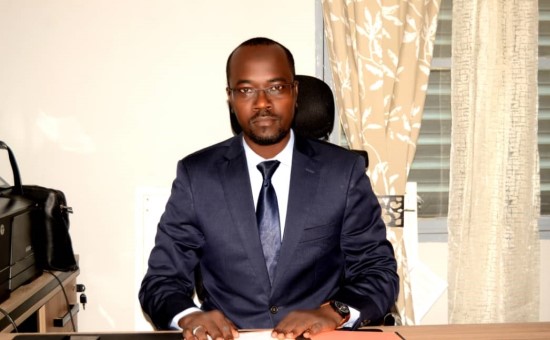
31 Aug Three Questions with Dr. Issakha Diar: Improving the effectiveness of Chad’s malaria response
Dr. Issakha Diar is the program coordinator for the National Malaria Control Program (NMCP) in Chad. HRH2030’s Capacity Building for Malaria activity supports countries such as Chad to achieve their malaria control and elimination goals.
Question 1: Tell us about the malaria situation in Chad. What are the biggest challenges of your program in the fight against malaria?
Malaria is the leading cause of morbidity and mortality in our health facilities, at 39% and 32%, respectively, and it is also a significant socio-economic burden through the additional costs caused by this disease, such as wages lost to illness, even though the treatment has been free for several years. As with most countries in the region, pregnant women, and children under the age of 5 are the most vulnerable, accounting for 55% and 15% of death — constituting around 70% of deaths due to malaria. Although the NMCP has made enormous progress since its creation in 1991, we are facing several challenges including a notably weak mobilization of domestic resources, which seriously undermines the issue of sustaining the achievements to date in the fight against malaria. There’s also a decrease in external donor contributions because of this unprecedented COVID-19 global crisis, which has security and economic implications.
Question 2: In partnership with HRH2030’s Capacity Building for Malaria (CBM) activity, and in close coordination with the U.S. President’s Malaria Initiative, you have been working since 2019 to improve the effectiveness and efficiency of Global Fund grant implementation, contributing to the shared goal of reducing malaria-related morbidity and mortality. How does this activity support you and your team in your efforts to fight malaria? Tell us about the progress you have made in the last two years?
With HRH2030 CBM’s support, we have been able to better implement malaria control activities and significantly improve performance, particularly in the mobilization of resources from the Global Fund. Chad has mobilized 54,000,000 euros and 61,000,000 euros for successive New Funding Model 2 (NFM2) for the period from 2018 to 2021 and the New Funding Model 3 (NFM3) for the period of 2021 to 2024, which are the highest amounts ever mobilized from the Global Fund for Malaria. We were able to improve our performance in 2019 A2 [“Meeting Expectations,” the second highest performance rating] for the first time; and prior to COVID-19, we conducted a better quantification exercises and regular monitoring of anti-malarial commodities with significant improvement in preventing stockouts at the health facility level. Also, we were one of the first countries to experiment with coupling door-to-door enumeration (counting household) with bednet distribution for the 2020 bednet campaign during the COVID19 pandemic – we have distributed more than 9,000,000 LLINs to date. This practice has been shared in several meetings in the region with other malaria actors as a best practice.
Question 3: You recently participated in a study tour to Togo to exchange technical knowledge and observe Togo’s malaria sentinel surveillance sites to strengthen Chad’s malaria surveillance systems. What were some specific lessons learned during that exchange and how have they helped you focus on strengthening malaria surveillance throughout the country? How will establishing sentinel sites in Chad help achieve its malaria control objectives?
The study tour allowed us to understand the criteria for selecting sentinel malaria surveillance sites, the process of setting up sentinel sites, the profile of the personnel who must work in sentinel malaria surveillance sites, as well as the training required for these personnel to maximize the contribution of the activities that will be conducted in these sites. It appears that sentinel sites are more of a system, an organization that does not necessarily require infrastructure or difficult arrangements for their implementation but rather dedicated time, using the means at hand with, most importantly, committed people. The exchange visit allowed us to understand what studies and research can be conducted in these sentinel sites, according to the different epidemiological and geographical facets, and enabled us to visit the insectarium in Lomé to understand how to set up and operate an insectarium. Being able to keep, breed, and study mosquitoes through an operating insectarium will enable us to advance our efforts to eliminate malaria in our country.
Photo: Dr. Issakha Diar.





